Canon EF-S 35 mm f/2.8 Macro IS STM
3. Build quality and image stabilization
In the photo below the Canon EF-S 35 mm f/2.8 Macro IS STM is positioned next to the full frame Canon EF 35 mm f/2 IS USM.
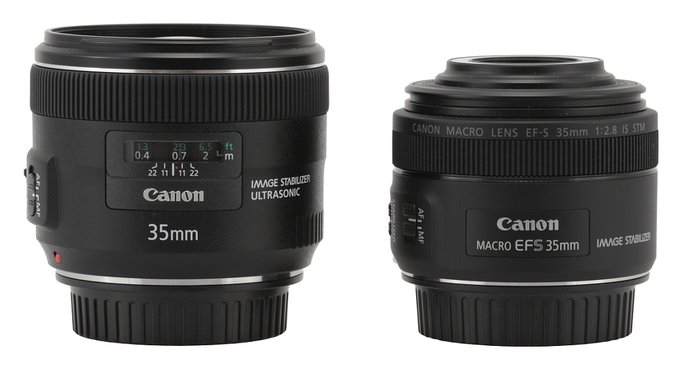 |
Please Support UsIf you enjoy our reviews and articles, and you want us to continue our work please, support our website by donating through PayPal. The funds are going to be used for paying our editorial team, renting servers, and equipping our testing studio; only that way we will be able to continue providing you interesting content for free. |
- - - - - - - - - - - - - - - - - - - - - - - - - - - - - - - - - - - - - - - - - - - - - - - -
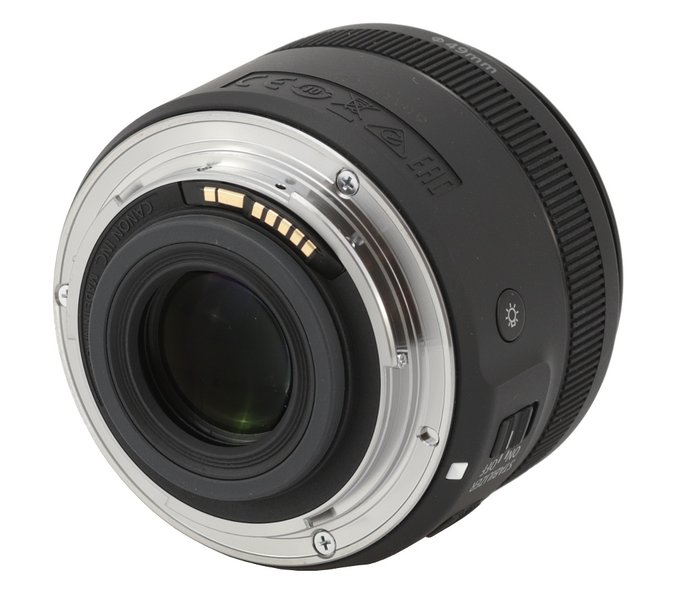 |
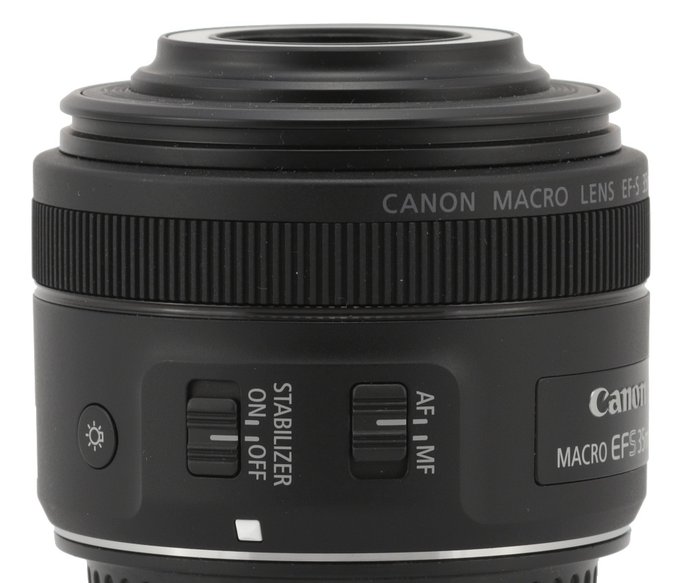 |
A manual focus ring is the next part of the lens. It is as wide as 9 mm and completely covered by rubber ribbing, utilizing a focus-by-wire, electrical design. It moves very smoothly but, in our opinion, its resistance should have been more pronounced. No distance or depth of field scale can be found in its proximity.
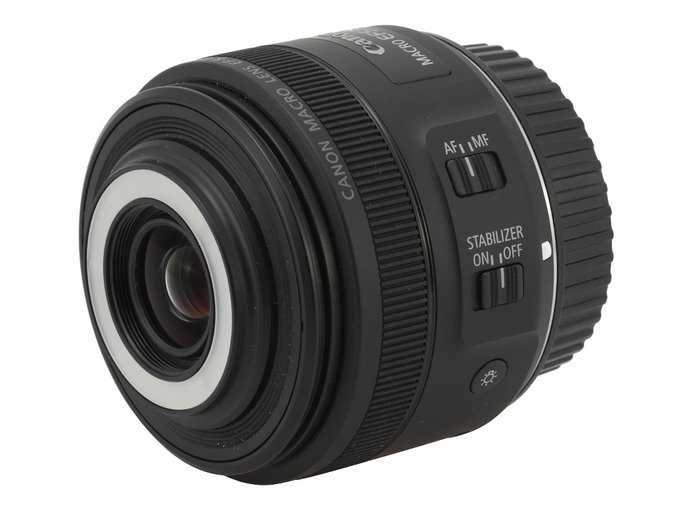 |
The front element of the lens is just 19 mm in diameter, slightly hidden in the tube, surrounded by LED lights to illuminate photographed objects better. They are very useful: if you employ the minimum focusing distance, the objects will be situated only about 2 cm away from the front rim of the lens.
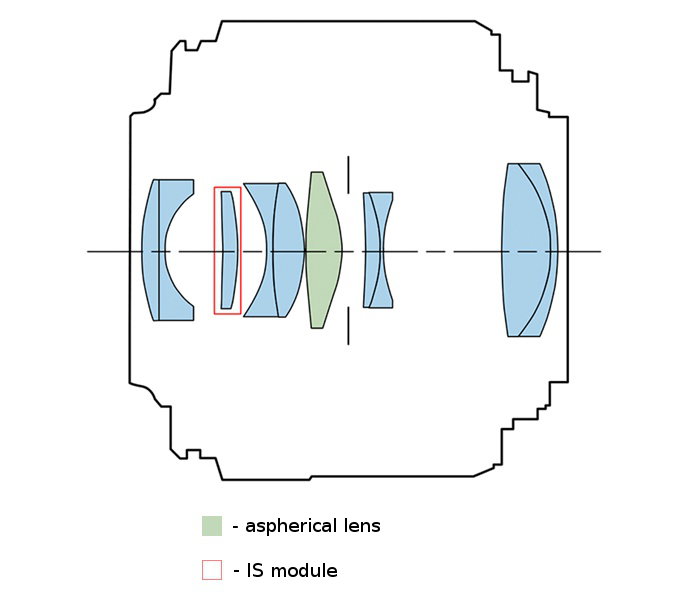 |
Buyers get in the box: both caps and a special hood which protects the LED lights and also has 49 mm filter threads incorporated into its surface.
Optical stabilization
The producer of the Canon EF-S 35 mm f/2.8 IS STM claims a 4-stop-rated Hybrid Image Stabilization system. Of course we had to check it. In order to do so we took several dozen photos with times of exposure ranging from 1/50 to 1 second with the stabilization switched on and off. For every set of photos we determined a percentage of blurred shots and presented it as a function of exposition time expressed in EV (0 EV being the equivalent of 1/40 of a second). An appropriate graph with results you can find below.
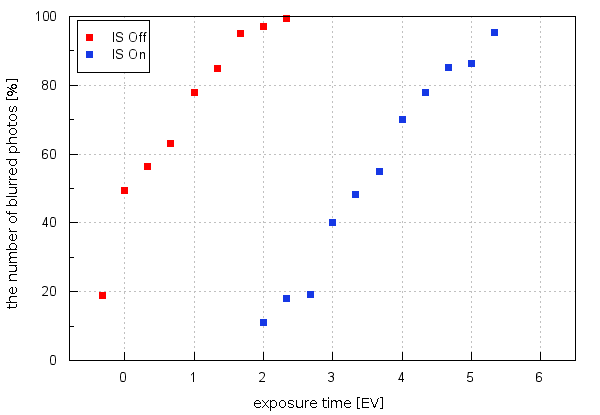
The maximum distance between both curves reaches 3.3 EV and such is, in our opinion, the stabilization unit efficiency. It is a sensible result, although a bit lower than the declared one.






